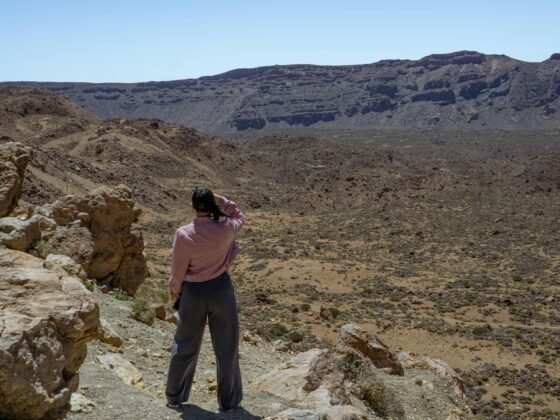Traveling opens up opportunities to explore new cultures, cuisines, and landscapes. However, whether you’re on a city tour in Paris or hiking trails in Patagonia, staying active while avoiding physical discomfort is crucial to making the most of your adventures. Prolonged sitting on flights, unfamiliar beds, and increased activity levels can often leave travelers feeling sore, tired, or in pain. But with the right strategies, you can keep your body healthy, active, and pain-free while traveling.
Here’s how:
1. Prepare Your Body Before Traveling
Preparation is the foundation for a smooth and active trip. Begin by incorporating light exercises into your daily routine leading up to your departure. Yoga, stretching, or light strength training can help improve your flexibility and endurance. Building muscle strength in areas like your core, back, and legs will make long periods of sitting and walking much easier on your body.
Additionally, investing in comfortable and supportive gear—like ergonomic travel pillows, compression socks, and properly fitted walking shoes—is another proactive measure.
2. Move Often During Transit
Sitting for hours during long-haul flights or road trips can be taxing on your body, leading to stiff muscles and poor circulation. Dedicate time to moving or stretching whenever possible:
- On flights, aim to stand and stretch every hour. Simple exercises like calf raises, ankle rolls, or gentle forward bends can make a huge difference.
- During road trips, plan to stop every two hours and take a short walk or stretch.
A simple yet effective routine can help prevent issues like leg discomfort or deep vein thrombosis (DVT), which is a common concern on long journeys.
3. Make Stretching a Daily Ritual
No matter where your travels take you, taking a few minutes to stretch each day can prevent muscle tightness. Consider incorporating the following stretches:
- Hamstring stretches to alleviate tension from walking or climbing.
- Shoulder and chest openers to counteract the effects of carrying backpacks.
- Hip flexor stretches to ease stiffness from sitting.
By dedicating 10–15 minutes each morning or evening to stretching, you can reset your muscles and start or end your day feeling refreshed.
4. Maintain a Balanced Diet and Stay Hydrated
Travel often exposes you to indulgent dishes that may lack the nutrients your body is accustomed to. Enjoy the new flavors but aim to balance indulgence with healthy options. Ensure your diet includes fiber, lean proteins, and plenty of greens to support energy levels and digestion.
Equally important is hydration. Carry a reusable water bottle with you and aim to drink water consistently throughout the day, especially when you’re walking long distances, hiking, or exposed to sunny climates. Proper hydration not only boosts energy levels but also reduces the risk of muscle cramps and fatigue.
5. Focus on Good Posture
Frequently, improper posture while walking, carrying luggage, or using devices can lead to pain in the neck, back, or shoulders. Be mindful of your body alignment:
- Keep your back straight while sitting or standing.
- Avoid tech neck by holding your devices at eye level instead of looking down.
- Distribute weight evenly while carrying backpacks or bags to avoid straining one side of the body.
If you’re using carry-on luggage, ensure it’s ergonomically designed with smooth wheels and adjustable handles to reduce strain during transportation.
6. Choose Active Adventures
Staying active while traveling doesn’t have to mean hitting the gym. Instead, weave movement into your itinerary through enjoyable adventures.
- Explore cities on foot or by bike.
- Sign up for hiking trails or nature walks at your destination.
- Engage in swimming or low-impact water sports if you’re near a beach or lake.
By making activity part of your exploration, you’ll discover more of your destination while also maintaining your fitness.
7. Listen to Your Body
Adaptability is key to healthy travel. If you feel tired or sore, allow your body time to recover. Overexertion can lead to injuries, making it harder for you to enjoy the rest of your trip.
For individuals with chronic pain or mobility issues, consulting healthcare professionals before your trip is highly recommended. Exploring advanced treatments for pain relief and improved mobility, like solutions available through ThriveMD, can set the stage for a more comfortable and active experience.
8. Leverage Recovery Tools
To counter travel-related aches, pack portable recovery tools, such as:
- A foam roller or massage ball for muscle knots.
- Heat packs or travel-sized massage devices for quick relief.
- Lightweight resistance bands for gentle exercise and stretching.
These tools can offer quick fixes and relief after a tiring day of exploration.
Final Thoughts
Travel can be one of life’s greatest joys, and with the right strategies, you don’t need to sacrifice your health or comfort to see the world. By preparing your body, staying active, and listening to your needs, you can enjoy your adventures to their fullest potential.
Where are your upcoming travels taking you? Start incorporating these tips now, and you’ll feel stronger, rejuvenated, and pain-free as you explore!
Image: Unsplash, Kalen Emsley












